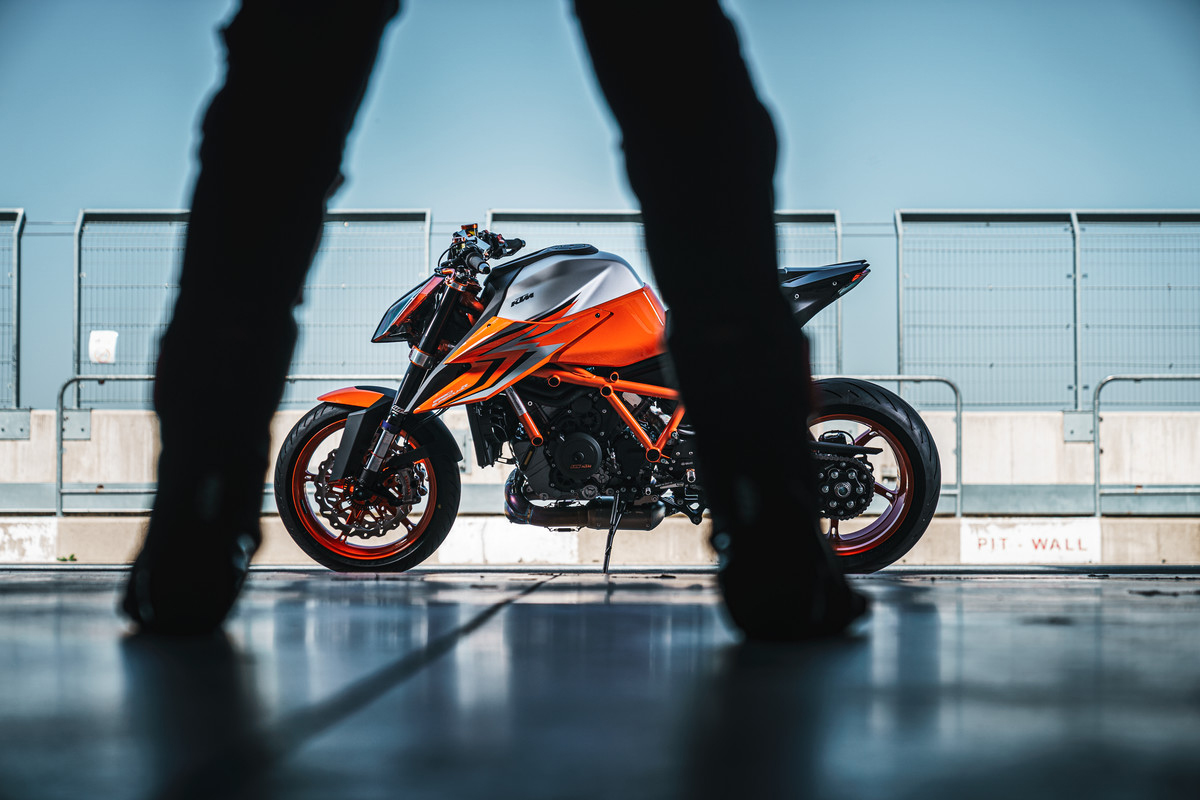
The engine is, arguably, the heart and soul of a motorcycle. It not only provides the manner of the forward motion but also the distinctive soundtrack, not to mention a visual iconography that becomes as important as the badge worn on the tank.
Across the history of the motorcycle, there have been many manufacturers that have been defined by their distinctive engines; Triumph and the parallel-twin and, later, the triple-cylinder; Ducati and the 90° V-twin; Harley Davidson its own take on the V-twin and not forgetting BMW and the horizontally-opposed boxer twin, while the Japanese made popular the inline four-cylinder motor.
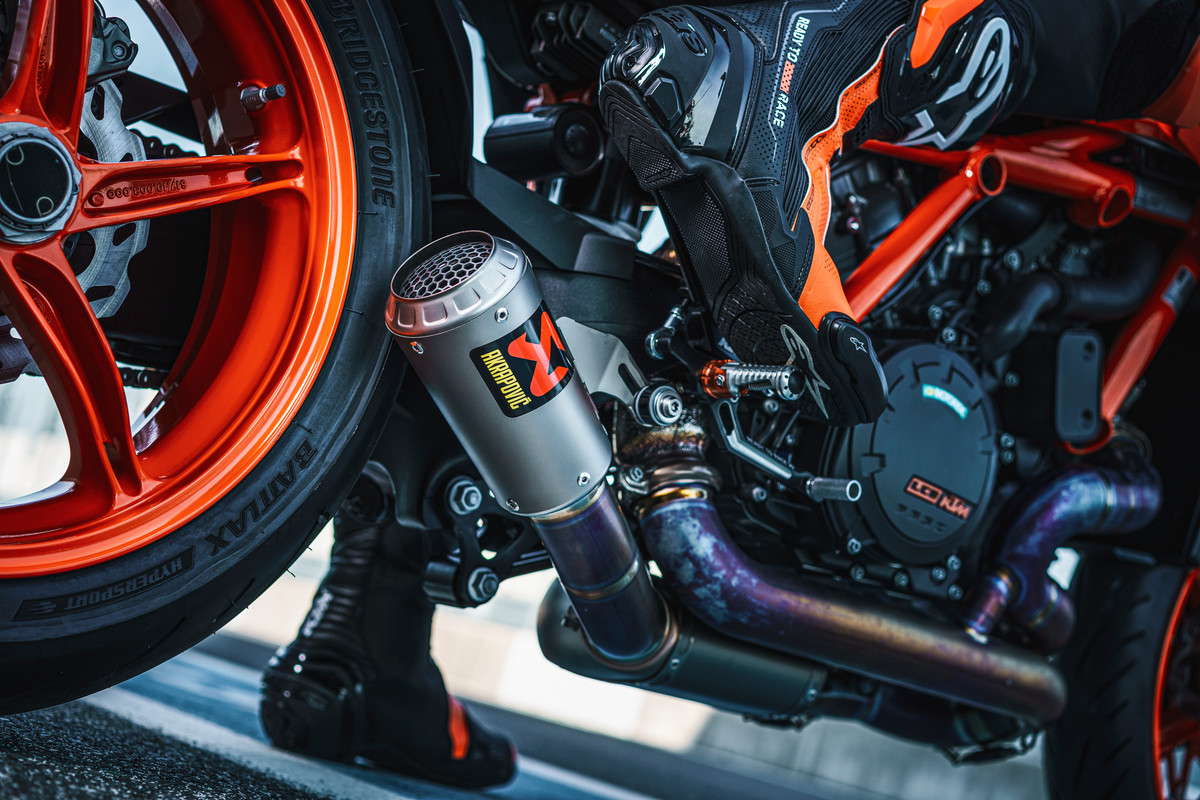
There is another engine, however, that is nearing its 20th anniversary and that has become an indivisible element of the identity of the manufacturer that developed it and uses it in an increasingly diverse range of its products.
It was in the late 1990s that Austrian manufacturer KTM began the development of a new engine that would power an ever more successful range of motorcycles from the beginning of the 21st century. The resulting LC8 V-twin motor would quickly establish itself as a potent yet accessible power plant and the engine upon which KTM’s future success would be built.
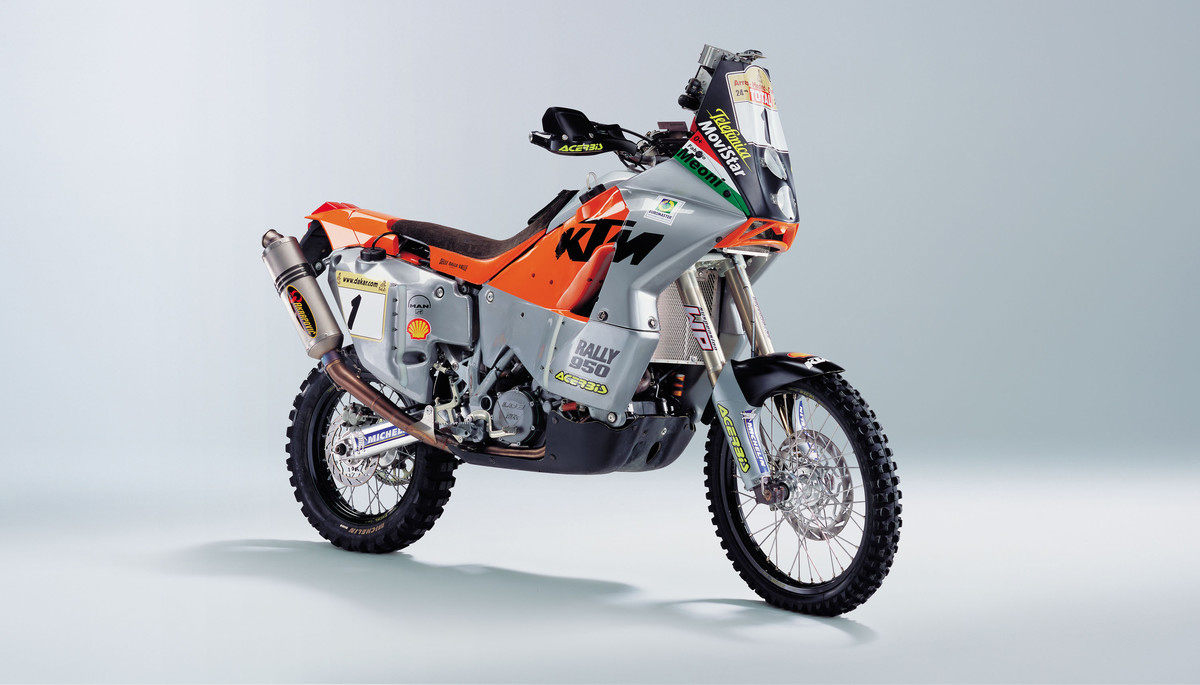
The year was 2003 and when KTM took the covers off the 950 Adventure, powered by a new V-twin motor, little could they predict how the engine would catapult them into the winners’ circle so effectively. It became an engine that could be adapted to fulfil many different roles in a wide range of bikes, from adventure, to superbikes, naked sports bikes and sports touring bikes.
Following on from the 950 Adventure came the first of the ‘hooligan’ Super Duke machines, the 990 Super Duke, in 2005. Then followed the remarkable – and sadly short-lived – RC8 superbike. Later still, the LC8 engine found a new niche in the Super Adventure models – 1050, 1090, 1190 and 1290 – as well as the Super Duke GT sports touring model. Rounding off an impressive CV is the insanity that is the 1290 Super Duke R.
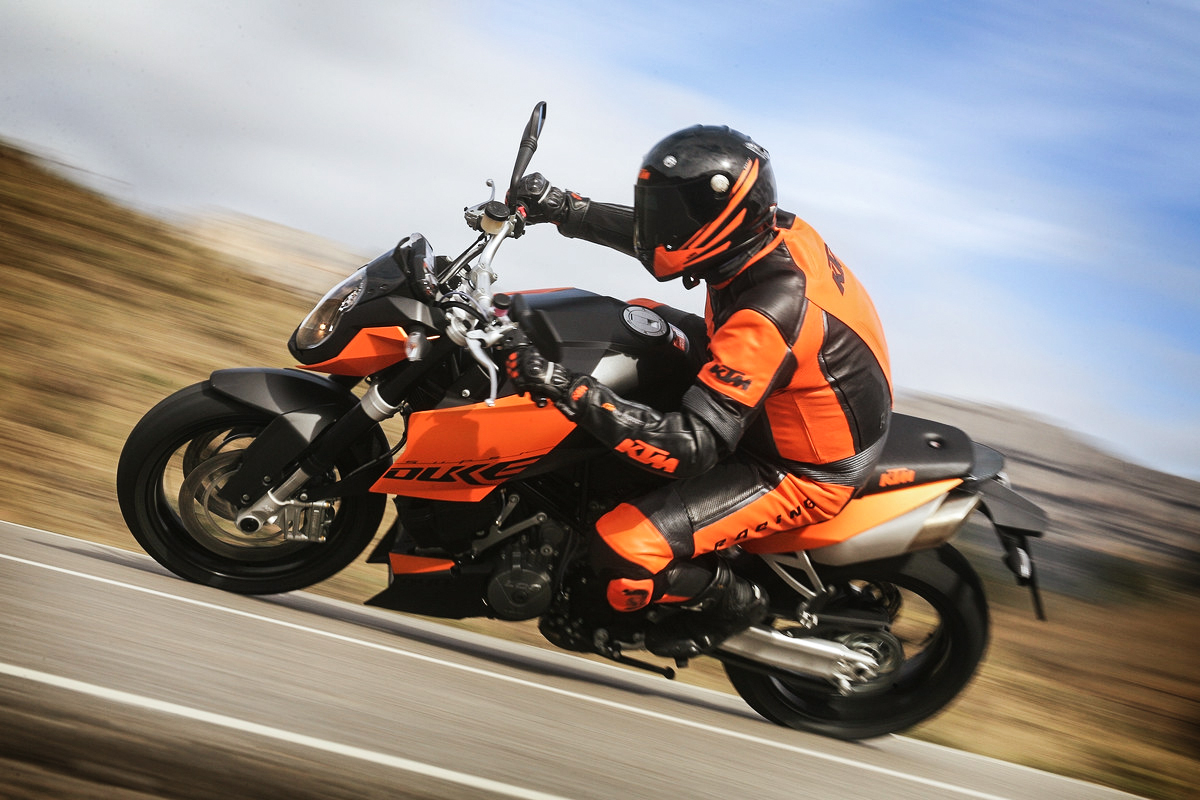
From the outset, the story was not simply one of massive power outputs – culminating in the 180bhp of the 1290 Super Duke R – and the monstrous torque, but the way that torque was delivered; a ton of low-down grunt that was such a characteristic of the engine and that made riding it such an experience.
It says a lot that all other manufacturers have taken the LC8 as the yardstick for the development of their own engines. BMW has pushed the boxer-twin to ever greater capacities and power outputs in an effort to stay on the same page while Triumph has been forced to alter the character of its triple-cylinder motor as found in the Tiger range of adventure bikes from refined smoothness to a rougher-edged personality to match the power delivery of a V-twin: not just any V-twin, but the LC8!
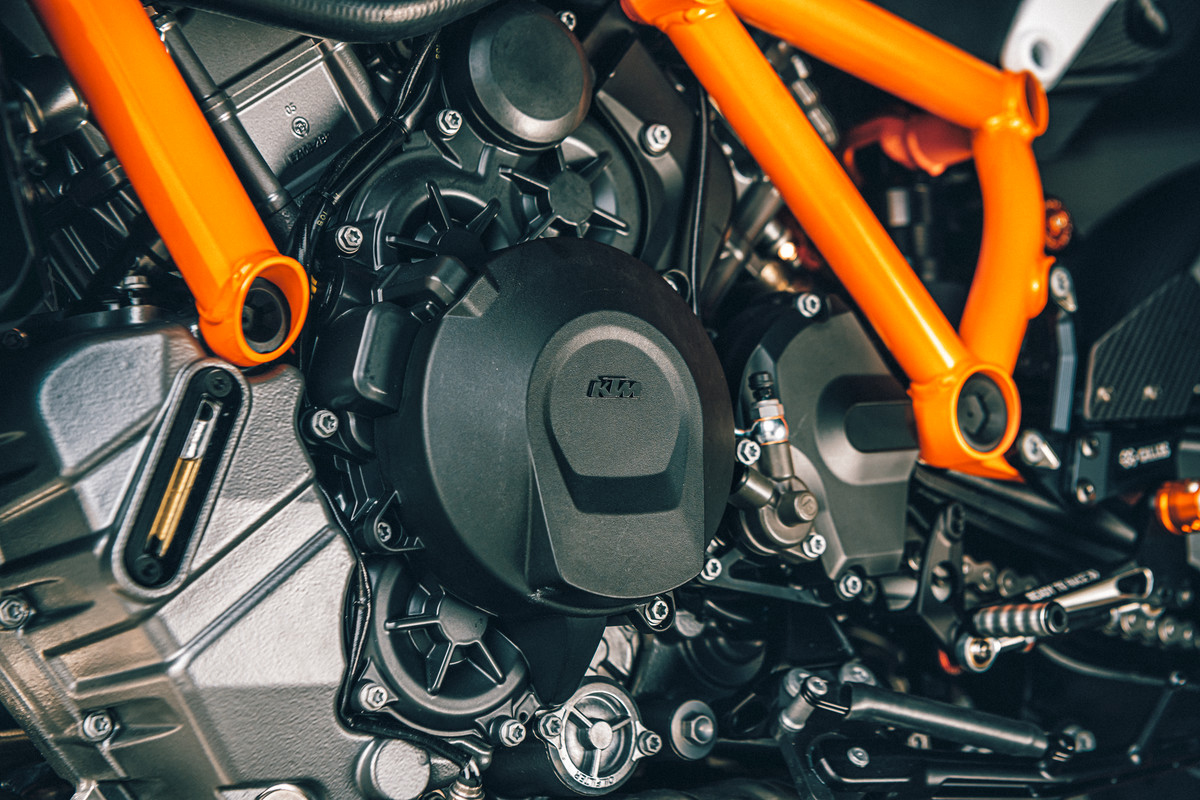
Another factor attributable to the LC8 engine is the development of increasingly sophisticated electronics to harness the power and torque. What these developments have done is enable the LC8 to adopt different personalities: from fire-breathing, track-melting performance, to mountain and obstacle-scaling controllability, via long-distance fuel economy and reliability.
Into 2021 and the fact that the LC8 engine was adapted to comply with Euro5 emissions legislation without losing any of its power or personality is testament to the initial design. That KTM continues to develop the engine, shedding weight and increasing service intervals along the way shows us that the story of the LC8 engine has many chapters still to be written.
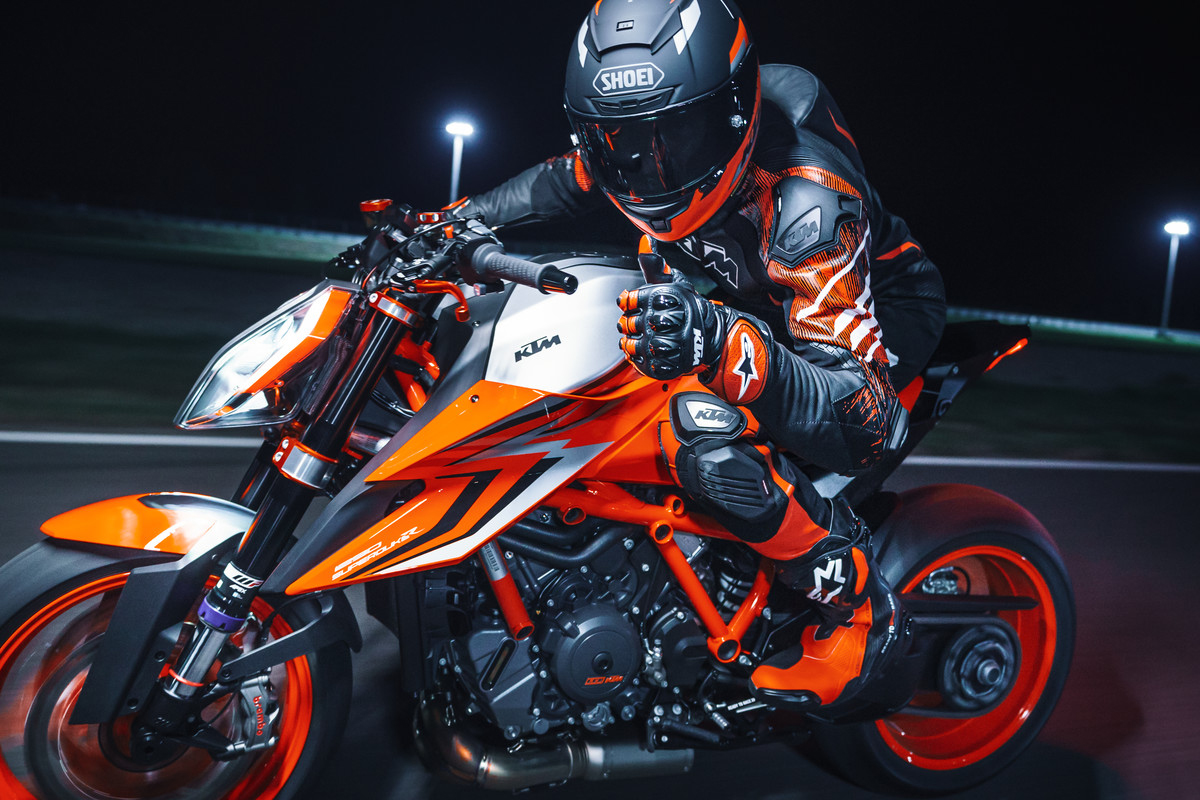
Adriaan Sinke, Head of Motorcycle Product Management: “As we come up to almost twenty years of the LC8 we felt it’s important to highlight how important and just how impressive this piece of engineering has been for both our R&D and of course some of the flagship bikes in our portfolio. Our goal was to have one of the lightest but most powerful V-twins on the market and the fact that we’ve been able to turn to the LC8’s basic outline, again and again, flip it around and still push it to new limits is testament to its brilliance. Riders are mostly using all that amazing low-end torque that the LC8 generates: that’s another strong asset and such a mark of KTM’s DNA. We’re looking forward to bringing riders and KTM petrolheads many more visions of how we can use the LC8 in the years ahead.”




